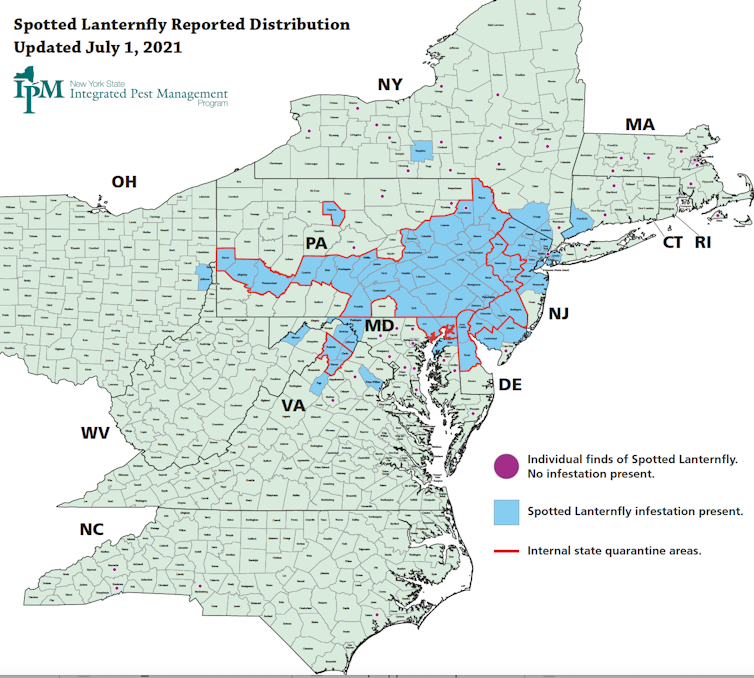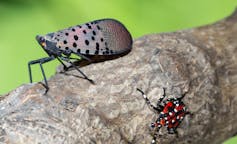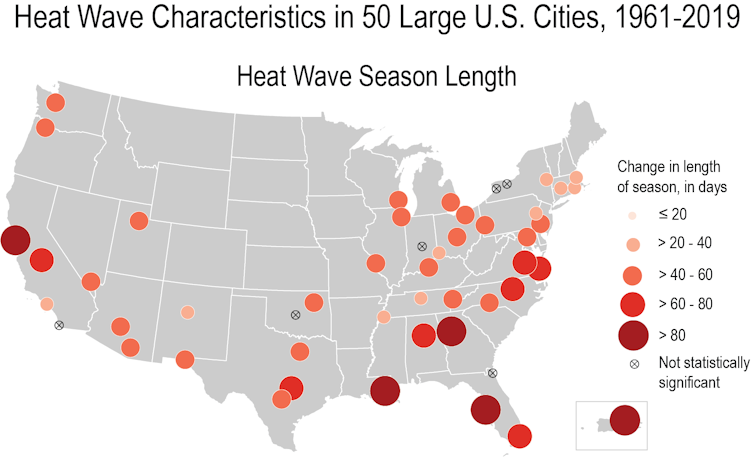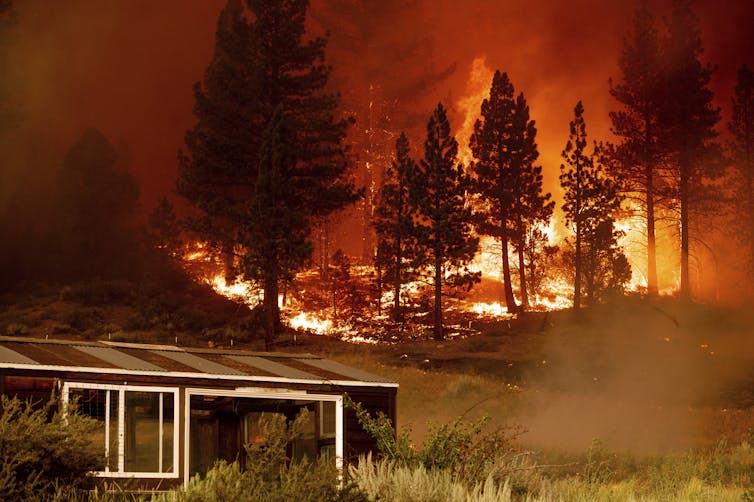“If
you’ve been fully vaccinated against COVID-19, maybe you figured you no longer
need to worry about contracting the coronavirus. But along with the rising number of
new COVID-19 cases globally and growing concern about highly
transmissible strains like the delta variant come reports of
fully vaccinated people testing positive for COVID-19. Members of the New York Yankees, U.S. Olympic
gymnast Kara Eaker and U.K. health secretary Sajid
Javid are some of those diagnosed with what is called a ‘breakthrough
infection.’
“As
scary as the term may sound, the bottom line is that the existing COVID-19
vaccines are still very good at preventing symptomatic infections,
and breakthrough infections happen very rarely. But just how common and how
dangerous are they? Here’s a guide to what you need to know.
What is ‘breakthrough infection?’
“No
vaccine is 100% effective. Dr. Jonas Salk’s polio vaccine was 80%-90% effective in preventing
paralytic disease. Even for the gold standard measles vaccine, the efficacy
was 94% among a highly vaccinated population during
large outbreaks. Comparably, clinical trials found the mRNA vaccines from Pfizer and Moderna were
94%–95% effective at preventing symptomatic COVID-19 – much
more protective than initially hoped.
“A
quick reminder: A vaccine efficacy of 95% does not mean that the shot protects
95% of people while the other 5% will contract the virus. Vaccine efficacy is a
measure of relative risk – you need to compare a group of vaccinated people to
a group of unvaccinated people under the same exposure conditions. So consider
a three-month study period during which 100 out of 10,000 unvaccinated people
got COVID-19. You’d expect five vaccinated people to
get sick during that same time. That’s 5% of the 100 unvaccinated people who
fell ill, not 5% of the whole group of 10,000. When people get infected after
vaccination, scientists call these cases 'breakthrough' infections because the
virus broke
through the protective barrier the vaccine provides.
How common is COVID-19 infection in the fully
vaccinated?
“Breakthrough
infections are a little more frequent than previously expected and
are probably increasing because of growing dominance of the delta variant. But
infections in vaccinated people are still very rare and usually cause mild
or no symptoms. For instance, 46 U.S. states and territories voluntarily
reported 10,262 breakthrough infections to the
U.S. Centers for Disease Control and Prevention between Jan. 1 and April 30,
2021. By comparison, there were 11.8 million COVID-19 diagnoses
in total during the same period.
“Beginning
May 1, 2021, the CDC stopped monitoring vaccine breakthrough cases unless they
resulted in hospitalization or death. Through July 19, 2021, there were 5,914 patients with COVID-19 vaccine breakthrough
infections who were hospitalized or died in the U.S., out of
more than 159 million people fully vaccinated nationwide.
“One
study between Dec. 15, 2020, and March 31, 2021, that included 258,716 veterans
who received two doses of the Pfizer or Moderna vaccine, counted 410
who got breakthrough infections – that’s 0.16% of the total.
Similarly, a study in New York noted 86
cases of COVID-19 breakthrough infections between Feb. 1 and
April 30, 2021, among 126,367 people who were fully vaccinated, mostly with
mRNA vaccines. This accounts for 1.2% of total COVID-19 cases and 0.07% of the
fully vaccinated population.
How serious is a COVID-19 breakthrough
infection?
“The
CDC defines a vaccine breakthrough infection as
one in which a nasal swab can detect the SARS-CoV-2 RNA or protein more than 14
days after a person has completed the full recommended doses of an
FDA-authorized COVID-19 vaccine. Note that a breakthrough infection doesn’t
necessarily mean the person feels sick – and in fact, 27% of breakthrough cases reported to the CDC were
asymptomatic. Only 10% of the breakthrough-infected people were
known to be hospitalized (some for reasons other than COVID-19), and 2% died.
For comparison, during the spring of 2020 when vaccines were not yet available,
over 6% of confirmed infections were fatal.
“In a
study at U.S. military treatment facilities, none of the
breakthrough infections led to hospitalization. In another study, after
just one dose of Pfizer vaccine the
vaccinated people who tested positive for COVID-19 had a quarter less virus in
their bodies than those who were unvaccinated and tested positive.
What makes a breakthrough infection more
likely?
“Nationwide,
on average more than 5% of COVID-19 tests are coming back positive; in Alabama, Mississippi and Oklahoma, the positivity rate
is above 30%. Lots of coronavirus circulating in a community pushes
the chance of breakthrough infections higher. The likelihood is greater in
situations of close contact, such as in a cramped working space, party, restaurant or
stadium. Breakthrough infections are also more
likely among health care workers who are in
frequent contact with infected patients.
“For
reasons that are unclear, nationwide CDC data found that women
account for 63% of breakthrough infections. Some smaller studies identified
women as the majority of breakthrough cases as well. Vaccines
trigger a less robust immune response among older people,
and the chances of a breakthrough infection get higher
with increasing age. Among the breakthrough cases tracked by the
CDC, 75% occurred in patients age 65 and older.
“Being
immunocompromised or having underlying conditions such as high
blood pressure, diabetes, heart disease, chronic kidney and lung diseases and
cancer increase the chances of breakthrough infections and
can lead to severe COVID-19. For example, fully vaccinated organ transplant
recipients were 82 times more likely to get a breakthrough infection and
had a 485-fold higher risk of hospitalization and death after
a breakthrough infection compared with the vaccinated general population in one
study.
How do variants like delta change things?
“Researchers
developed today’s vaccines to ward off earlier strains of the SARS-CoV-2 virus.
Since then new variants have emerged, many of which
are better at dodging the antibodies produced
by the currently authorized vaccines. While existing vaccines are still very
effective against these variants for preventing hospitalization, they are less
effective than against previous variants.
“Two doses of the mRNA vaccines were only 79% effective at
preventing symptomatic disease with delta, compared with 89% effective in the
case of the earlier alpha variant, according to Public Health England. A single
dose was only 35% protective against delta. About 12.5% of the 229,218 delta variant cases across
England through July 19 were among fully vaccinated people.
“Israel,
with high vaccination rates, has reported that full vaccination with the Pfizer
vaccine might be only 39%-40.5% effective at preventing delta variant
infections of any severity, down from early estimates of 90%. Israel’s findings
suggest that within six months, COVID-19 vaccines’ efficacy at preventing
infection and symptomatic disease declines. The good news, though, is that the
vaccine is still highly effective at protecting against hospitalization (88%) and severe illness (91.4%) caused by the
now-dominant delta variant.
So how well are vaccines holding up?
“As
of the end of July 2021, 49.1% of the U.S. population, or just over
163 million people, are fully vaccinated. Nearly 90% of Americans over the age
of 65 have received at least one dose of a vaccine. Scientists’ models suggest
that vaccination may have saved approximately 279,000 lives in
the U.S. and prevented up to 1.25 million hospitalizations by the end of June
2021. Similarly, in England about 30,300 deaths, 46,300 hospitalizations and 8.15
million infections may have been prevented by COVID-19
vaccines. In Israel, the high vaccination rate is thought to have caused
a 77% drop in cases and a 68% drop in hospitalizations from
that nation’s pandemic peak.
“Across
the U.S., only 150 out of more than 18,000 deaths due to COVID-19 in May were
of people who had been fully vaccinated. That means nearly all COVID-19 deaths
in U.S. are among those who remain unvaccinated. The
U.S. is becoming ‘almost like two Americas,’ as Anthony Fauci
put it, divided between the vaccinated and the unvaccinated. Those who have not
been fully vaccinated against COVID-19 remain at risk from the coronavirus that
has so far killed more than 600,000 people in the U.S.” (The Conversation).
by Sanjay Mishra, PhD,
Project Coordinator & Staff Scientist, Vanderbilt University Medical
Center, Vanderbilt University










